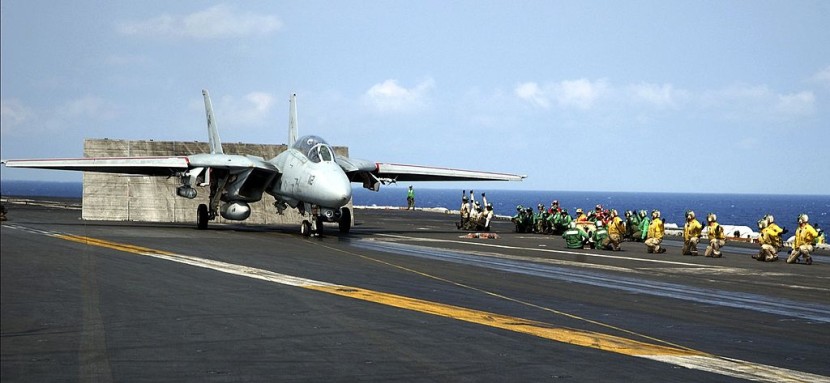
The F-14 Tomcat is the swing-wing interceptor based on aircraft carriers launched by steam catapults. It was best as interceptors and best known for its specialty in firing long-range air-to-air missiles.
F-14 Tomcat built for combat
One of the best carrier-based fighters that feature the best technology in any aircraft in service during the Cold War. Used for air defense, intercept, strike, and reconnaissance missions, the two-seat fighter was developed for its specific role in naval aviation. It replaced the excellent F-4 Phantom fighter bomber used in the Vietnam war, and Tomcats were first onboard carriers in 1972.
The F-14 Tomcat and catapult.
— U.S. Navy (@USNavy) October 29, 2014
Two of our favorite cats on this #NationalCatDay. pic.twitter.com/qiCd27jrZ7
The first variant of the Tomcat was kept the same with no upgrades until 1986. In 1987 the major changes in the equipment were installed. It was the F-14B that got a better engine to improve its performance, and another improvement is the addition of newer radar equipment for target acquisition.
#DYK the F-14 Tomcat was a superior offensive attack aircraft and the first such American jet fighter with twin tails? It also appears at the end of the new "Top Gun: Maverick" trailer! #NorthropGrumman #NationalAviationHistoryMonth pic.twitter.com/Rpk5QhErHh
— Northrop Grumman (@northropgrumman) November 26, 2019
Aerial agility was improved with better flight controls and avionics, especially new missiles that got it named the Super Tomcat 'D,' ready for missions in 1988.
Types of the F-14
The US Navy flies about 338 Tomcats in all three variants (F-14, B, D), although the 18E/F Super Hornet replaced it due to certain factors. It was too expensive to operate, which made the development of the Hornet possible.
In July 2006, the F-14 Tomcat flew of the steam catapults off a flat-top deck, but on September 22 in 2006, it was officially retired, and the F/A-18 Hornet took its place.
F-14 Tomcat: The Iranian Air Force Reverse Engineering the Fourth Generation Fighter
But, the F-14s Iran got in the 70s from the US are still in operation with the Iraqi Air Force (IAF). IAF Tomcats have been able to overpower older fighters from the Soviet Union.
Weapons of the Tomcat
This twin-engine fighter has the Vulcan M61A-1 20mm gun loaded with 675 rounds shells to shoot down other planes for close-in dog fights or weapons of last resort.
Under the plane are eight hardpoints for bombs and missiles, four on the body and two on the wings to mount weapons. Missiles are short-range, medium, and long-range air-to-air missiles like the AIM-9, AIM-7, and AIM-54. Bombs that can be carried are the Rockeye bomb and CBU cluster bombs.
The ranges of the missiles are 45 km. or 8 km. but the longest range is 150 km. The Tomcat can shoot six targets at the same time when detected by radar or infrared.
Other bombs that the F-14D carries (4 maximum) the joint direct attack munitions (JDAM), first used in March 2003. They are guided by the LANTIRN targeting pod that designates what to attack. On the nose is a Lockheed Martin infrared search and track system.
How the Tomcat sees
Equipped sensors are its eyes and ears, with a Raytheon AN/APG-71 digital multimode radar (F-14D), tactical air reconnaissance pod system (TARPS) with several functions that allow the plane to scan see its environment for awareness electronically.
One system is the Lockheed Martin AN/AAD-5 infrared line scanner that allows near real-time images sent to the aircraft carrier command center via a data link.
With the TARPS is the fast tactical imagery (FTI) line-of-sight system for targeting and reconnaissance. The F-14 Tomcat Northrop Grumman has these tactical systems that make it an excellent interceptor.
The F/A-18 E Super Hornet: More Advanced Block III Variant for US Navy








